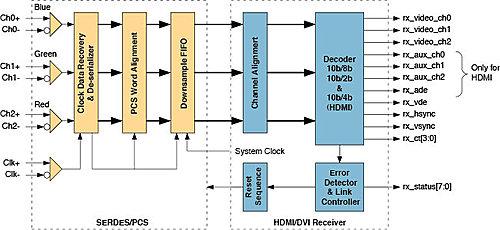TMDS
Introduction
Transition modulation differential signal, is also referred to as minimizing transmission differential signal, refers to the conversion of raw signal data into 10 bits by different or different or non-equivalent logic algorithms. The first 8-bit data was obtained by the original signal, and the 9th indicator operation is used. The 10th is used to correspond to the DC balance (DC-Baalanced, means that the DC offset in the channel in the coding process is zero, level Transformation implements matching between different logical interfaces), conversion data is transmitted in differential transmission. Such an algorithm makes the upper and lower molf reduction of the transmitted signal transition process, and the transmitted data tends to decrease, which reduces the electromagnetic interference of the transmission line, improves the speed and reliability of signal transmission

In the late 1990s, Silicon Image started to use panel connections, digital visual interface (DVI), and HD Multimedia Interface (HDMI) to promote its ownership standard - minimum transmission difference signal (TMDS: Transition Minimized Differential Signal). In this case, the transmitting end is mixed with a more advanced encoding algorithm having a reduced EMI characteristic on the copper wire, thereby enabling the receiving end with a robust clock recovery performance.
8-bit / 10-bit coding is a second-order processing that converts an 8-bit input signal to a 10-bit encoding. And LVDS is similar to that it uses a differential signal to reduce EMI and improve the accurate signal transmission rate. Also similar to LVDS is that it is a serial transmission design.
Application field
DVI technology has been successfully applied to the PC field, HDMI technology has also successfully pushed the consumer electronics market. However, TMDS is not therefore a widely used panel interface standard. On the contrary, LVDs without patent fees have been commonly used. In addition, the current DVI version cannot be updated, and has physical, functional and cost limit.
The current HDMI high-definition line is the TMDS algorithm, and HDMI divides the video signal into R, G, B, H, and V. TMDS technology encoding. TMDS transmits the three channels to R, G, B three original colors, and the HV encoding is transmitted in the B signal passage, and the excess position of R, g is used to transmit audio signals.
Latest: Enrichment
Next: Instant News Products








